MB Borough Hall — History & Photos
The stately building on the southwest corner of Beach Road and Willow Avenue — the Monmouth Beach Borough Hall — has been the heartbeat of municipal government for more than a century. But it started out as something and somewhere entirely different.
A pure product of the Gilded Age — a time of “wasteful and ridiculous excess,” according to Mark Twain — it opened as the “Monmouth Beach Casino” with a big celebration in June 1896. Some 300 guests attended including the near future Vice President of the United States, Garret A. Hobart.
The casino — then located on the northeast corner of Beach Road and Seaview Avenue — was designed by Romeyn & Stever of New York and constructed by Robert H. Hughes of Long Branch (he also built the Long Branch Casino in 1907). Hobart, who owned of a large summer cottage in town, “took an active part” in the ceremony, according to a New York Times report on the events. He’d win the VP nomination that same month in St. Louis. Sadly, he’d be dead within three years (the incumbent VP was only 55).
In 1910, an ambitious New York attorney, Thomas W. Butts acquired the property. That summer he started construction on a new pool club at the foot of Beach Road. By November 1913, Butts was in NYC’s Ludlow Street jail for fraud.
Privacy & Seclusion
The casino was associated with Monmouth Beach Clubhouse Hotel, a nearby resort facility on Beach Road. Thanks to the opening of the Long Branch & Sea Shore Railroad, which first stopped in town in July 1865, this coastal community became a highly regarded private summer spot for the rich and famous during late 19th Century times. By 1878, Monmouth Beach had become “an aristocratic colony,” according to the New York Times.
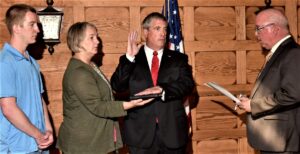
Borough Leader — David Stickle is sworn in as Mayor of Monmouth Beach by Borough Attorney Dennis Collins (r) at Borough Hall, May 2021. The mayor’s wife Lisa holds the Bible and his son Michael observes (Jack Flaherty Photo).
The exclusive resort was a major destination for “rich and famous” types and at least two US Presidents and Vice-Presidents. Some of the nation’s leading orchestras filled the hall and sprawling veranda with music during Jersey Shore summer months. Nathan Franko, the Concertmaster of the Metropolitan Opera House Orchestra in New York City, often led the music efforts. According to Monmouth Beach: A Bicentennial Publication (1975) by Rosemary O’Brien, the casino building included a large French-windowed hall with a stage at one end, and a quaint little balcony at the other. Features included a huge stone fireplace, billiard room, and bowling alley. Socials, theatricals, dances and concerts were common. The property also had nearby tennis courts.
“Monmouth Beach is delightfully situated and it must be well governed to prosper.”
—Long Branch Daily Record, September 1929
On the Move
As the century turned and tastes changed the popularity of the spot faded — the building declined. With no official meeting place, in 1906 the new borough council set aside $500 to buy land for a new borough building. In 1913, the casino was lifted and then moved west by a team of horses to its current location on the corner of Beach Road and Willow Avenue. For the next few years, it was used by the Algonquin Tribe for events and then as ice cream parlor and dance hall run by Peter Sheridan and Peter Kaltenborn who bought it in 1916.
In early 1917, newly-elected Mayor A. O. Johnson led the effort to buy the casino building and property and convert it into a Borough Hall for the community. Until then, the borough’s governing body had met in the firehouse (paying $10 per month rent). Founded in 1905, the fire company predates the borough by a year.
The borough council (Sidney West, Richard West, John Cook, Frank Van Brunt, Charles Valentine and Richard Wood) voted unanimously to purchase the property and building in August 1917 for $2,500. The structure required some work which cost another $6,000. The majority of the funds were borrowed from the Long Branch Trust Company and the project was paid for through the sale of bonds.
The architect was Clarence Wilson. Robert W. Zimmerman handled the painting and carpentry work, William Curr & Company did the plumbing and heating, and the structure was insured for $5,000. The first building custodian was Fred Horner. While the plan might have been enlightened, it was also risky. The total expenditure of $8,500 to get an operational town hall ready represented nearly half of the town’s total 1917 municipal operating budget (then $17,870).
A public reception for the new Borough Hall — “a home for the business of the borough,” said Mayor A.O. Johnson — was held in April 1918. From the start is considered it a community center too, calling the new hall a place for “popular use.” At that time the borough council also purchased a flag with 17 stars recognizing the number of Monmouth Beach “boys” fighting in World War I.
In January 1919, the borough sold the adjoining piece of property west of Borough Hall on Beach Road to the fire company for $50. Shortly thereafter, the fire company moved its firehouse from the northwest corner of Beach Road and Borden Street to its present location. In June 1956, the Borough Hall roof was hit by lightning and a subsequent large fire did nearly $25,000 in damages.
The town library got its start in Borough Hall in March 1925, when the council gave permission to the Monmouth County Library to open a second floor balcony room. Shortly thereafter the Monmouth Beach Public Library Association was born. In 1937, a sign was posted outside of Borough Hall formally announcing a library. Beginning in 1950, Christian Gaarder served as the borough’s librarian for a decade without pay. After many complaints about cramped space in the upstairs library room, (the library was popular right off), the town paid $4,000 for property on Willow Avenue in November 1960. It took a while but a new facility was opened on that spot in 1968.
Growth and Change
Proving to be too cramped for a quickly expanding shore community (town population nearly tripled from 1950 to 1970), a large renovation project on Borough Hall was undertaken in May 1977. The bulk of the work was done in the rear of the building included the addition of a court/meeting room and a police station (the police force was housed in the old Seahorse Card & Gift Shop on Beach Road during construction). The southeast front porch was also enclosed for additional office space.
In the spring of 1990, under the direction of newly returned Commissioner SIdney Johnson, the borough approved a $50,000 bond ordinance to make improvements to the Borough Hall, including new siding, inside upgrades and outside sidewalks. In October 1990, a new police headquarters was opened on Willow Avenue and the force moved out of Borough Hall permanently.
The position of borough administrator was created by the commission in 2005; Fred Jahn held the first post. During the borough’s centennial celebration in 2006, Borough Hall housed a fine “Century of Memories” exhibit which included vintage photographs, newspaper articles, artifacts, and a video/DVD with oral history interviews with distinguished borough residents.
In recent years the building housed the town’s municipal offices, tax office, code office, municipal court and court administration and mayor’s office. Elections were also held there. For years the main hall has played host to variety of meetings — including everything from AA to folk dancing.
The facility was severely damaged during the brutal Hurricane Sandy storm in October 2012, with over a foot and half of storm water entering the historic building. To prevent future flooding the building was raised some 12 feet and the interior was refurbished.
* * * * *
The Lost Casino
There was another Monmouth Beach Casino — one unseen by today’s eyes. Located in Galilee opposite the old train station (between Central and Park Roads), this “famous casino” burned to the ground as the century turned. The “mysteries conflagration” — as reported by The Shore Press in November 1900 — was started by an “eccentric old fisherman” named Thomas Robbins.
Completed in time for the 1883 summer, the facility “was known as a fashionable rendezvous for the millionaire cottages owners at Monmouth Beach and Sea Bright,” according to the Press.
The newspaper reported that Robbins fell asleep in an adjoining stable and his smoking-pipe started the blaze. He was identified (a skeleton in the ruins) by James Mulligan (Station Keeper at the US Life-Saving Service station in Galilee) who recognized Robbins’ pocketknife. Calls to the Sea Bright and Long Branch fire departments for assistance “were refused.” George Fisher Baker, a fabulously wealthy and influential summer resident, owned the “old casino.” (more on him — HERE.)
A new casino was constructed on Beach Road in 1896 and later moved up the road to become the Borough Hall in 1918.
* * * * *
Monmouth Beach Mayors:
• David Stickle (August 2020–Present)
• Susan Howard (May 2005–August 2020)
• James P. McConville, III (May 1997–May 2005)
• Louis P. Sodano (May 1981–May 1997)
• F. Brent Neale (June 1978–May 1981)
• Sidney B. Johnson (May 1949–June 1978)
• G. Henry Mihm (May 1945–May 1949)
• Abram O. Johnson (May 1937–May 1945)
• William F. Carhart (May 1933–May 1937)
• John J. Campbell (Oct. 1929–May 1933)
• Maxwell B. Smith (Jan. 1929–Oct. 1929)
• George Y. Van Brunt (Jan. 1927–Dec. 1928)
• Abram O. Johnson (Jan. 1917–Dec. 1926)
• Jesse P. Mahahan (Jan. 1911–Dec. 1916)
• Garrett H. White (Jan. 1909–Dec. 1910)
• William H. Heitzman (Apr. 1906–Dec. 1908)
— Monmouth Beach Mayor’s Gallery: HERE —
Monmouth Beach Borough Clerks:
• Joyce Escalante (2006–Present)
• Bonnie G. Moore (1969–2005)
• Clarence B. Cook (1965–1969)
• Beatrice Cooper Ennis (1933–1964)
• Marguerite Cooper (1931–1933)
• Beatrice Cooper (1929–1931)
• William F. Carhart (1928–1929)
• William F. Bradley (1927–1928)
• B. Lester Van Brunt (1917–1927)
• Jesse Potter (1906–1917)
MB Casino/Borough Hall Images …
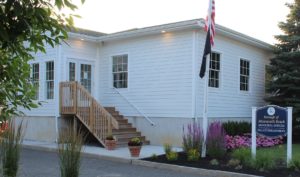
Town Hall — Borough municipal office: 18 Willow Avenue / 732-229-2204 / Office Hours: M-F, 9 am to 4:30 pm / Website / Borough Administrator: Anthony Villane and Borough Clerk: Joyce Escalante –- MORE INFO.
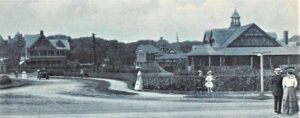
Monmouth Beach Casino (r) seen from Ocean Avenue, early 1900s. In 1913, the building was moved west up Beach Road and made into the Borough Hall.
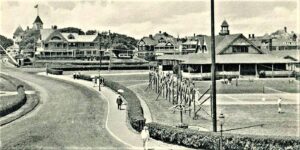
Monmouth Beach Casino (and tennis courts), early 1900s. Christened by a future US Veep in June 1896.
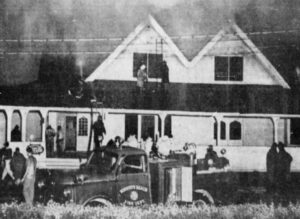
Hot Stuff — Borough Hall on fire, Red Bank Daily Register, June 1956. The fire — which caused $50,000+ in damages mostly to the roof and upper floor — was spotted by PAL youths upon entry for dance night. Borough fire officials blamed the blaze on a bolt of lightning and faulty wiring.
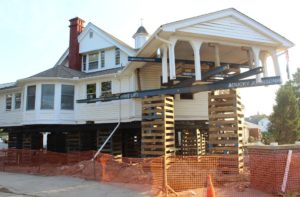
Standing Taller — Borough Hall being lifted, 2017. To prevent future flooding damage — Superstorm Sandy had clobbered it good in 2012 — the building was raised over 12-feet.
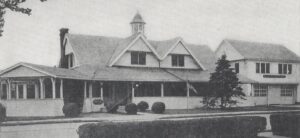
Home Cook — Borough Hall (l) on Beach Road, 1940s. The property had been owned by Jemima Cook until 1917. Born in England, she came to Monmouth Beach in 1867 and lived here until her death in November 1913 at age 93. Her husband, Jonathan, the original Beach Road property owner, died in 1876.
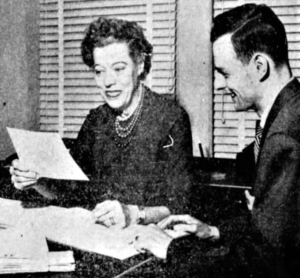
Steady Hand — Borough Clerk Beatrice Ennis with E. Robert Potter, municipal auditor from Long Branch at Borough Hall, June 1959. Bea was borough clerk for 35 years — no one did it longer or better. She worked uncounted hours (Saturdays and many late “meeting nights”) but loved her work and thought it important. Mayor Sidney Johnson called her a “symbol for the best in Monmouth Beach public service,” Bea was admired for her hard work, civility, and discretion. The borough’s “model public servant” — upon her retirement in November 1964 — considered herself a “real clam-digger.” The lifelong Wesley Street resident and Star of the Sea graduate died in March 1980.
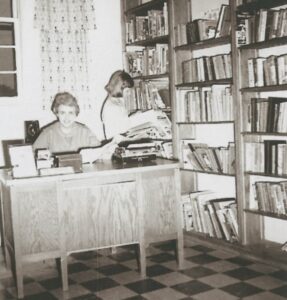
Steps to Reading — Margaret Heath in the library room, 1960s. An informal borough library got started in Borough Hall in March 1925, when the council allowed volunteers usage of a single room (81-square-feet) off the second floor balcony. It remained there until 1968. Mrs. Heath — the town’s first paid and trained librarian — served for 30 years.
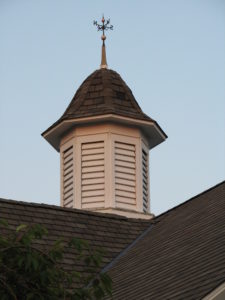
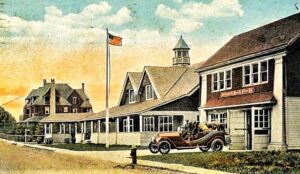
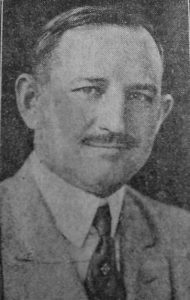
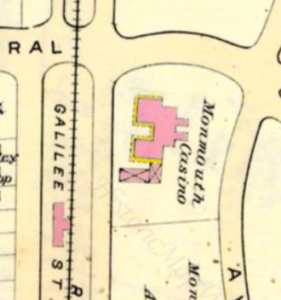
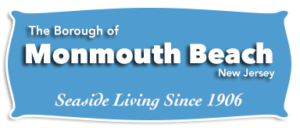
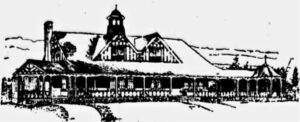
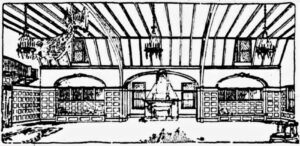
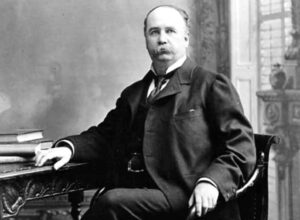
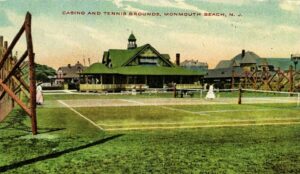
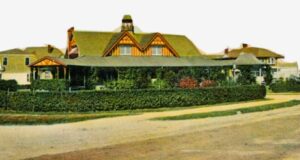
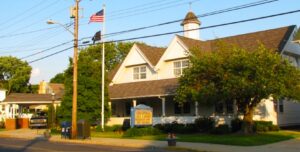
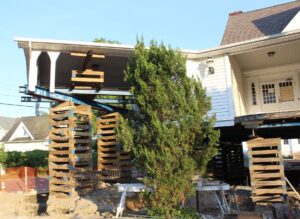
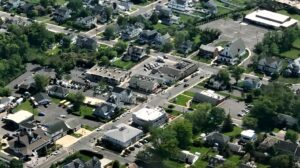
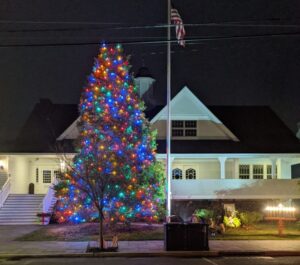
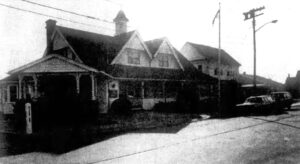
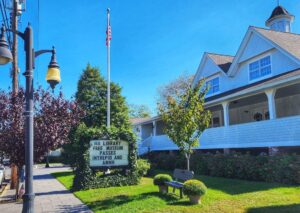
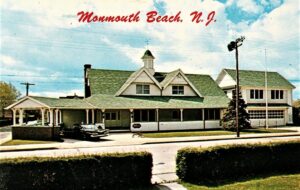
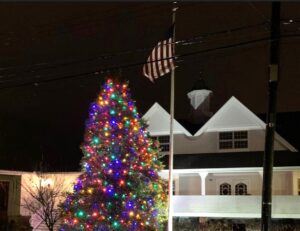
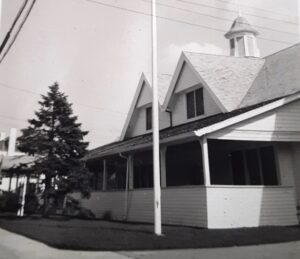
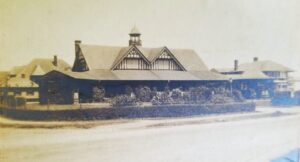
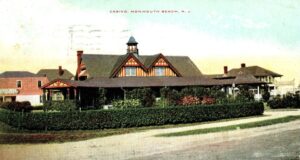
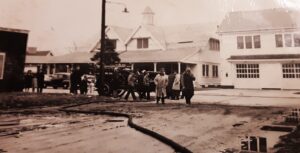
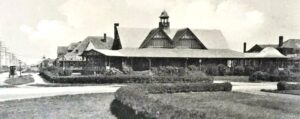
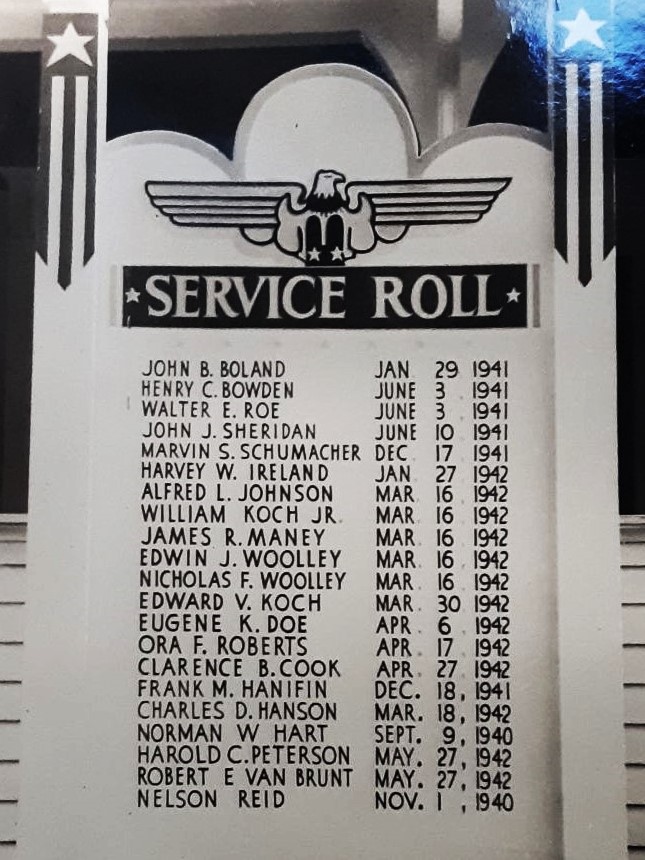
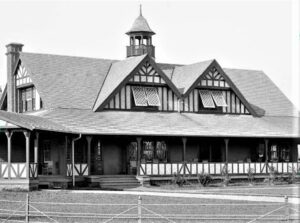
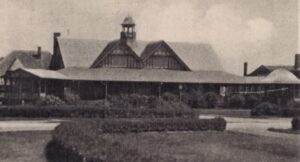
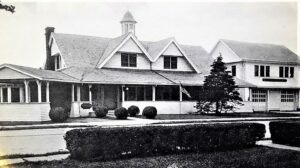
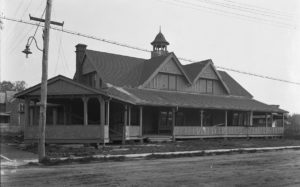
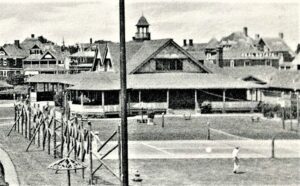
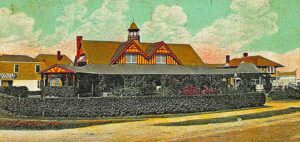
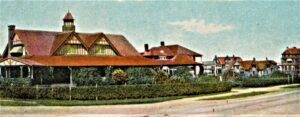
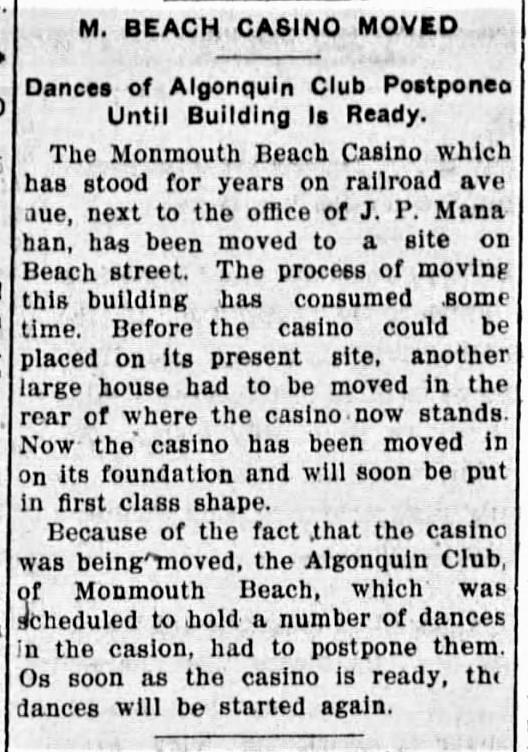
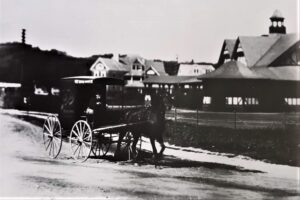
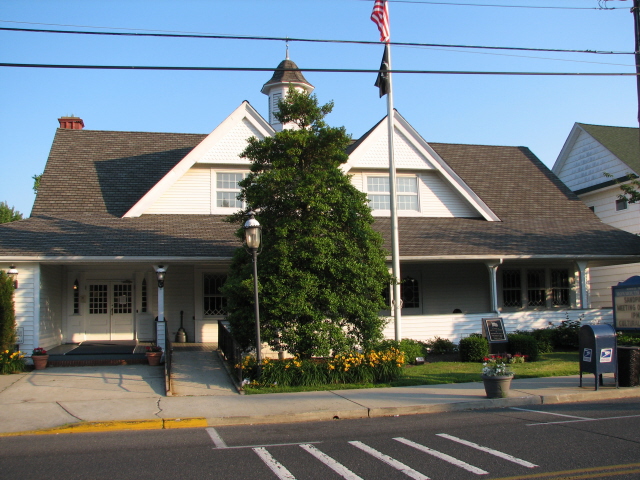
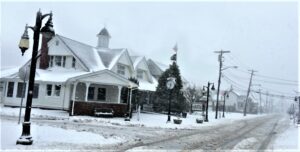
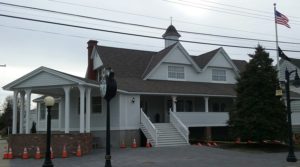
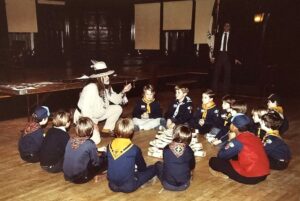
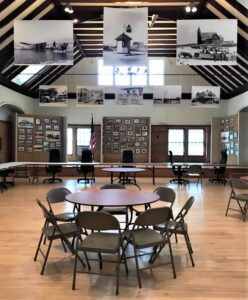
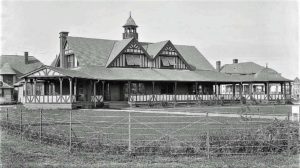
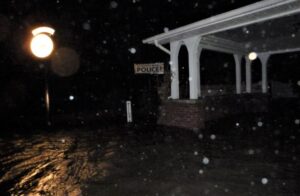
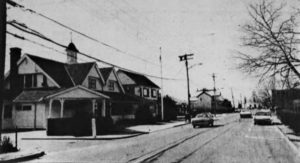
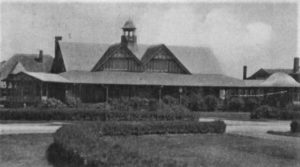
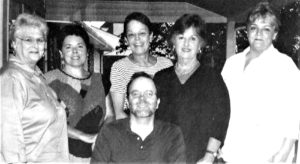
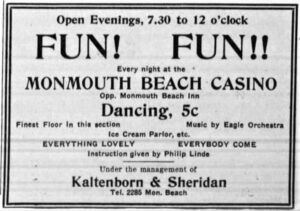
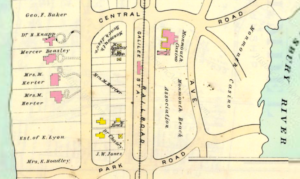
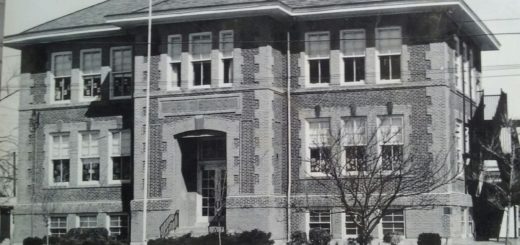

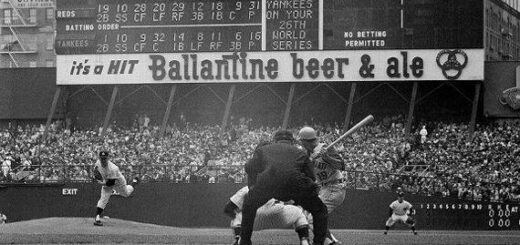


The Renovations for siding, porch flooring, railings, posts, interior upgrades (windows, trim, cabinets,etc), and cuppola were done by Kuhlthau Construction, Inc of Monmouth Beach. Phil Kuhlthau was the company owner and Bill Hansen was the Clerk of the Works overseeing the project for the Boro.